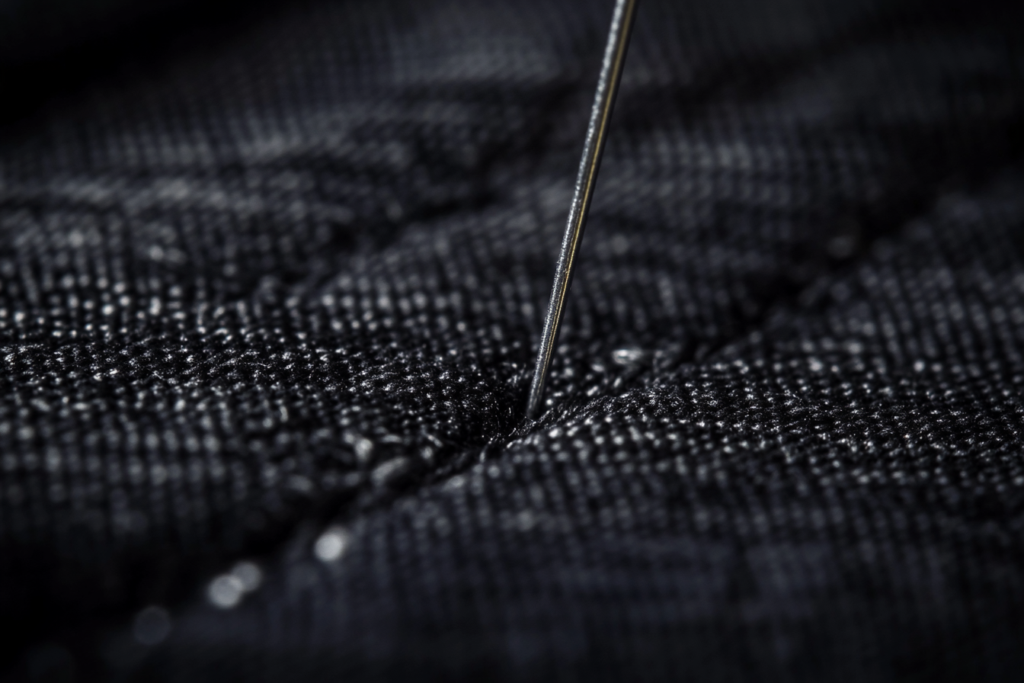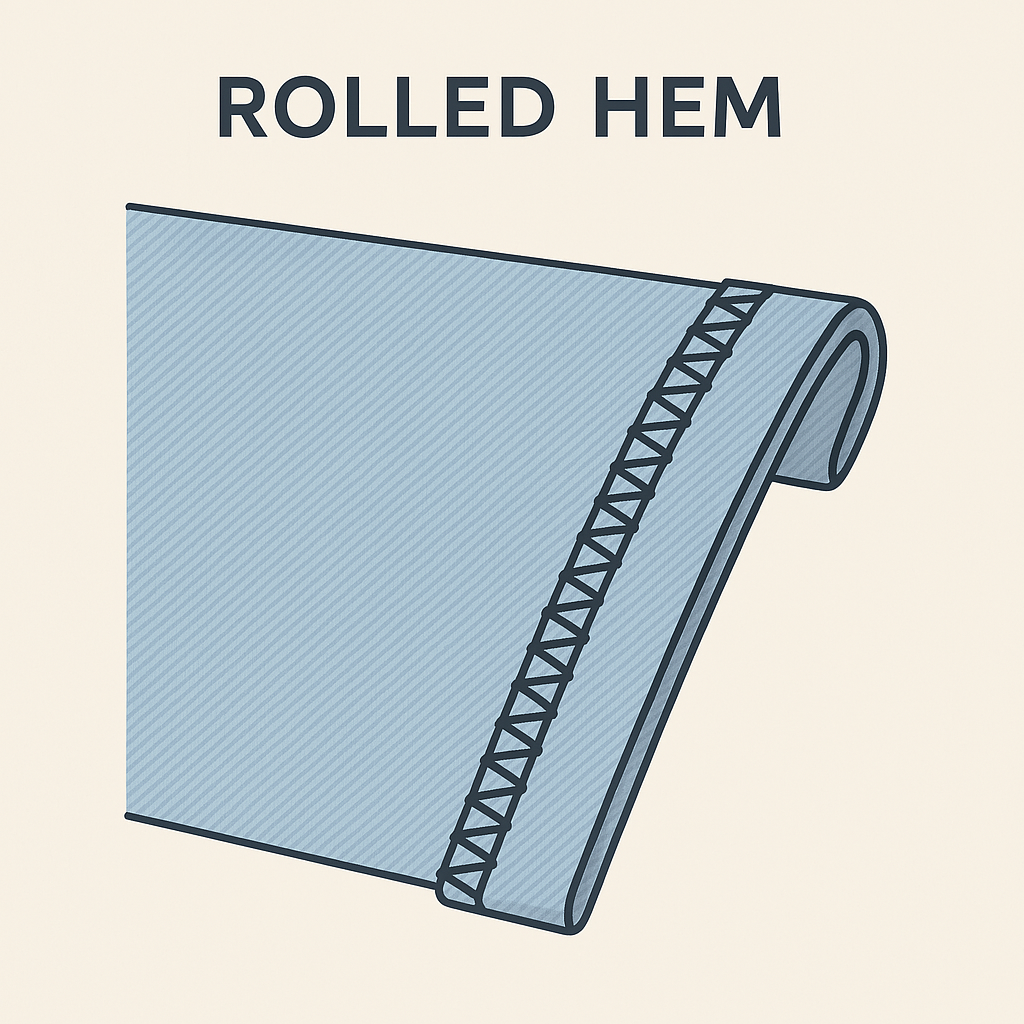Blind Hem Line: A Discreet and Elegant Hemming Technique
The blind hem line is a popular and refined method for securing hems in garments where an invisible finish is desired. As illustrated in Figure 10.1, this method is commonly used in both hand-sewn and machine-sewn applications, with the primary goal of concealing the stitches from the outside of the garment.
👉 What Is a Blind Hem?
A blind hem involves folding the hem back into the garment and securing it in a way that only a minimal portion of the stitch is visible from the outside—if at all. In the hand-sewn version, the stitches are so subtle that the hem becomes nearly invisible. A machine blind hem, on the other hand, uses a special curved needle and a single-thread chain stitch to replicate the effect.
🌟 Key Characteristics
- ✅ Invisible from the front: If done correctly, the stitch picks up only a few threads of the outer fabric.
- ✅ Not highly durable: Best suited for high-end garments or pieces that are not frequently machine-washed.
- ✅ Ideal for fine fabrics: Works well on both woven and knitted textiles.
🔧 Equipment and Settings
- ⚖️ The regulator on the blind hem machine determines how far the stitch reaches into the front fabric.
- ➡️ Proper setup ensures the needle penetrates only partway through the outer fabric.
- 🕳️ If the regulator is set too aggressively, the stitching becomes visible on the outer surface, forming a line of small grooves.
🔍 Application in High-End Garments

Figures show the correct needle penetration – a small vertical line that does not pass through the outermost fabric layer. This is ideal for tailored garments and unlined jackets, where a neat and clean finish is essential.

Figure demonstrates the use of taping on thicker fabrics, such as wool twill waterproof fabric, to prevent raw edges from fraying. This treatment not only enhances durability but also adds a premium finish.

Figure depicts an alternative version where the raw edge is rolled, and then the hem is secured using the invisible hem technique. This variation is particularly useful in unlined suit jackets, giving them a tailored, high-end look.
⚠️ Limitations and Considerations
- ❌ Not recommended for thin fabrics: The stitch might show through.
- ❌ Risk of unraveling: Since it’s a chain stitch, a break can lead to complete unthreading.
- ❌ Requires dry-cleaning: Best suited for garments that are not frequently laundered.
🏦 Use Cases
| Garment Type | Recommended Blind Hem Use |
|---|---|
| Dress Pants | ✅ Excellent choice |
| Evening Dresses | ✅ Provides invisible elegance |
| Unlined Suit Jackets | ✅ Neat and clean finish |
| Everyday T-shirts | ❌ Not recommended |
🔮 Summary
The blind hem is an excellent technique for finishing hems discreetly and elegantly. Although not the most durable, it excels in creating a refined look for tailored, formal, or delicate garments. With the correct tools and setup, the blind hem can make garments appear seamlessly finished, especially where clean design and invisible construction are prioritized.



